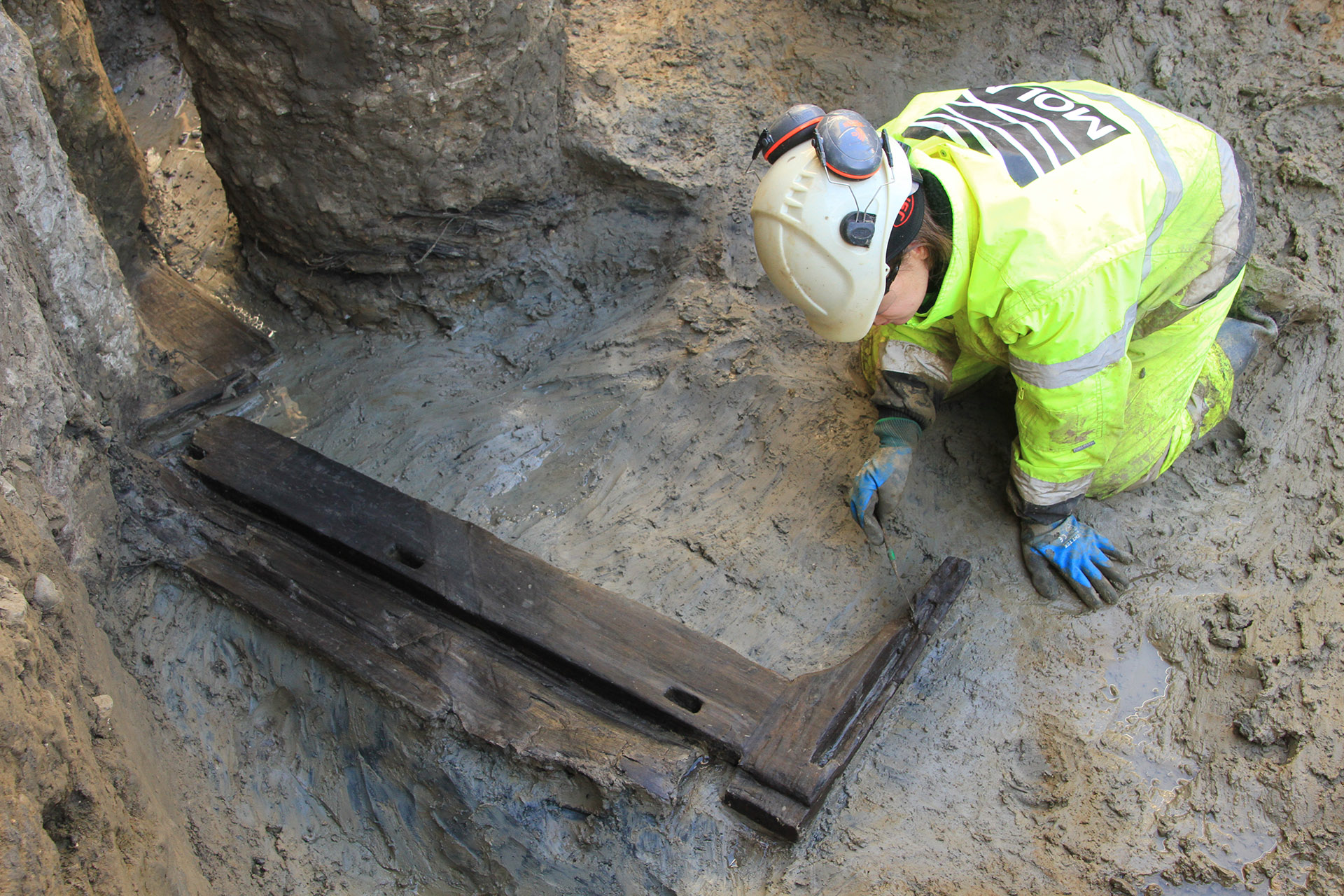
‘Incredibly rare’ Roman discoveries found on-site at Holborn Viaduct
February 8, 2024
Archaeological excavations have revealed an extraordinary array of Roman (AD 43-410) finds, including wooden coffins and what appears to be a funerary bed, at the construction site for PLP-designed offices near Holborn Viaduct. Excavations have been taking place by MOLA (Museum of London Archaeology) ahead of the construction of 265,000 sq. ft office scheme developed by Royal London Asset Management Property. Now six metres below modern street level, the team have uncovered the resting place of some of Roman London’s first residents.
Preserved by the damp mud of the River Fleet, the oak coffins and funerary bed, dating back almost 2000 years, are incredibly rare finds. Only three well-preserved Roman timber coffins have ever previously been found in London. Here archaeologists have already uncovered a further five. The funerary bed found at this site is the first complete example ever discovered in Britain. It was dismantled prior to being placed within the grave but may have been used to carry the individual to the burial and was likely intended as a grave good for use in the afterlife. Alongside skeletal remains, archaeologists have found personal objects including beads, a glass vial, and a decorated lamp – which is thought to date to the very early Roman period in Britain c. AD 48-80.
These Roman finds are just the latest layer to be revealed in the site’s slice through London’s history. Archaeologists discovered chalk floors and timber-lined wells, thought to be the remains of a 13th century tannery. Further wooden finds included a large 15th- or 16th-century water-pipe, which appears to have originally been used to pump water on a ship.
In the latest chapter, the site is currently being transformed into bespoke office space for global law firm Hogan Lovells. It is intended to display some of the archaeological finds at the property, adding to the cultural offer at a key gateway to the Culture Mile.
Excavations will continue through early 2024, while post-excavation work is also beginning to carefully conserve and analyse the finds from the site. The archaeological finds are not expected to disrupt the construction programme, as the potential for archaeology in the area was well known in advance and experts were consulted early on to ensure that this was integrated into the project’s timeline.
Discover more about the project here
